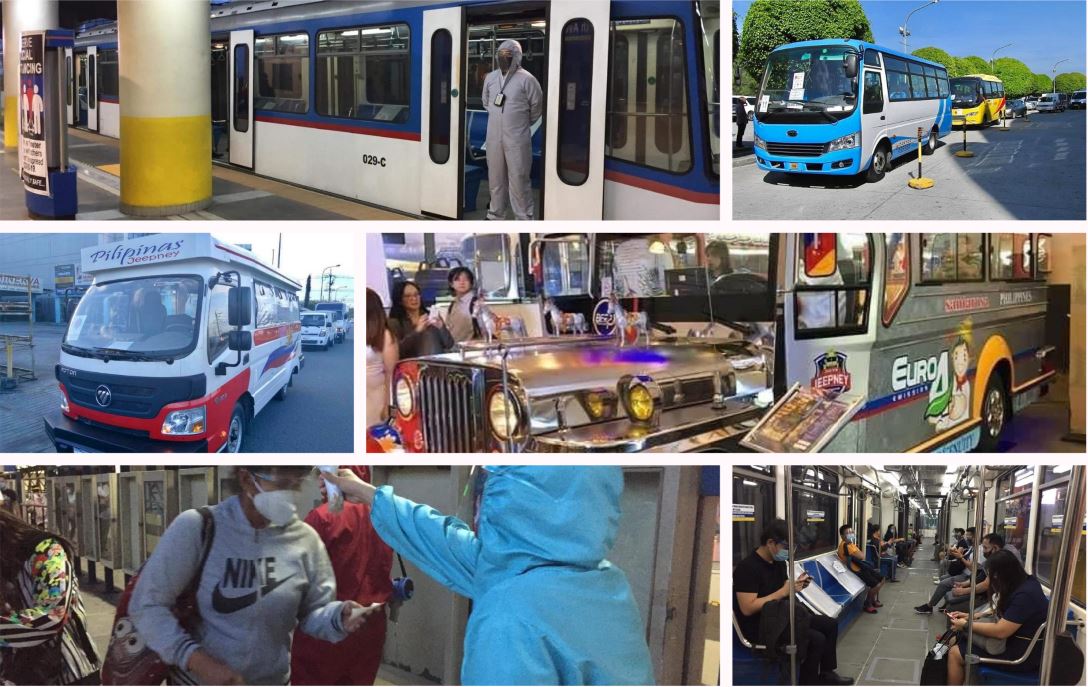Transit Advertising Philippines: An Innovative Method to Market
Transit Advertising Philippines: An Innovative Method to Market
Blog Article
How Transit Advertising Can Change Public Transportation Spaces Into Dynamic Marketing Platforms
Transportation advertising holds substantial capacity to redefine public transport rooms into vibrant advertising platforms that engage and educate. By utilizing ingenious formats such as digital display screens and interactive stands, brand names can not just reach a varied audience yet also enhance the general traveler experience. This approach creates a distinct chance for brands to link with consumers in a setup that is commonly overlooked. As we explore the diverse advantages and advancing approaches of transit advertising and marketing, it elevates the inquiry of how this transformation could redefine our communications with both brand names and the city setting.
Advantages of Transit Marketing

Furthermore, transit advertising is extremely cost-effective contrasted to traditional media. It enables marketers to achieve high impacts at lower costs, making best use of return on investment. The restricted target market of commuters gives an opportunity for brands to share their messages to individuals that are commonly receptive throughout their travel times.
Furthermore, the vibrant nature of transportation advertising enables projects to be updated often, ensuring that messaging remains timely and relevant. This flexibility can be critical in replying to market patterns or promotional occasions, keeping the brand top-of-mind for customers. Finally, the prevalent visibility of transportation marketing adds to brand name recall; repeated exposure within acquainted travel contexts strengthens brand name recognition and fosters consumer loyalty, eventually driving sales and boosting brand name track record.
Sorts Of Transit Marketing
Public transport systems provide various formats for advertising, each dealing with various advertising and marketing strategies and target market interaction approaches. One prominent type is exterior bus and train wraps, which cover the entire automobile and create a mobile signboard result, enabling high presence in city environments. These covers can capture interest as they go across busy streets, reaching a varied audience.
An additional popular layout is indoor marketing, which consists of posters, digital screens, and advertisements on transportation seats. These positionings involve travelers during their journey, strengthening brand messaging in a confined area. Digital displays, particularly, provide the benefit of dynamic material, allowing advertisers to update messages in real-time.
Terminal marketing is also substantial, featuring posters, banners, and interactive booths within transit terminals. These ads take advantage of foot web traffic and can target particular demographics based on area.
Last but not least, marketing partnerships with transportation authorities can lead to special projects, such as themed transportation experiences or events, boosting the general involvement with travelers. Each sort of transit advertising provides unique benefits, permitting brand names to tailor their strategy to efficiently reach their target audience within the public transportation ecological community.
Engaging Travelers Efficiently
Travelers are progressively flooded with advertising messages throughout their everyday journeys, making it important for brand names to involve them in cutting-edge means. To record focus in this congested room, marketers have to prioritize creativity and relevance. Making use of attractive visuals and concise messaging can considerably improve the possibility of engagement.
Interactive components, such as QR codes or augmented truth features, can also change static ads into immersive experiences, fostering a deeper connection with the target market. Brands ought to concentrate on dealing with commuters' passions and demands, tailoring messages to reverberate with their lifestyle, whether via promos for local services or solutions designed to enhance their travelling experience.
In addition, timing plays a crucial role; tactically placing ads during height travelling hours can optimize presence and effect. Involving travelers effectively see it here additionally entails leveraging social media assimilation, allowing passengers to share their promos or experiences straight from transit systems, therefore intensifying brand name reach.
Essentially, effective engagement hinges on comprehending the commuter journey and developing engaging, interactive, and relevant marketing experiences that not only record interest yet additionally drive activity and loyalty. By doing so, brand names can transform mass transit into a dynamic marketing system that resonates with its target market.

Measuring Advertising And Marketing Impact
Exactly how can brand names properly evaluate the efficiency of their ad campaign en route settings? Gauging the impact of transit advertising requires a complex strategy that integrates quantitative and qualitative metrics. One common method is tracking interaction with mobile analytics, where brand names can assess foot traffic patterns and application interactions previously, during, and after campaigns.
Studies can give beneficial understandings right into brand recall and customer view, enabling brand names to assess just how well their messages reverberate with travelers. Furthermore, monitoring social networks involvement related to particular projects can reveal shifts in public understanding and brand conversation.

Additionally, teaming up with transportation firms can boost measurement precision, as they commonly have in-depth group data on ridership fads. By integrating these methods, brand names can develop an extensive understanding of their advertising and marketing effectiveness, guaranteeing that their campaigns not just get to but also influence their target audiences effectively.
Future Patterns in Transportation Advertising
A considerable shift is anticipated en route advertising as technological improvements and changing consumer behaviors reshape the landscape. Transit Advertising Philippines. The combination of electronic screens and multimedias is expected to enhance engagement, allowing brands to see this site supply vibrant material that resonates with varied target markets. As public transport systems welcome clever modern technology, marketers will utilize real-time information analytics to tailor messages based on guest demographics and habits
Additionally, enhanced reality (AR) is positioned to transform the way commuters communicate with advertisements. By giving immersive experiences, AR can change an ordinary trip into an appealing story that records interest and fosters brand name loyalty. This innovation will likely motivate advertisers to develop more experiential projects that drive consumer interaction.
Sustainability is an additional important fad affecting transportation advertising and marketing. As ecological consciousness grows, brand names will progressively look for to line up with green practices, making use of lasting materials and promoting eco-friendly efforts within their projects.
Verdict
In conclusion, transit marketing supplies substantial benefits by enhancing brand name exposure and engaging a restricted target market. As fads evolve, the potential for cutting-edge communications in between brands and travelers is poised to expand, ensuring that transportation marketing stays a crucial component of contemporary advertising techniques.
Transportation advertising holds substantial potential to redefine public transportation spaces into dynamic advertising systems that engage and educate. The prevalent presence of transportation marketing adds to brand name recall; repeated exposure within acquainted travel contexts strengthens brand name awareness and promotes consumer loyalty, ultimately driving sales and boosting brand online reputation.
How can brands accurately evaluate the performance of their advertising campaigns in transit atmospheres?In final thought, transportation advertising supplies significant advantages by boosting brand name exposure and involving a restricted target market. Transit Advertising Philippines. As fads evolve, the capacity for ingenious communications between commuters and brands is positioned to read more expand, making sure that transportation advertising stays a vital part of modern marketing methods
Report this page